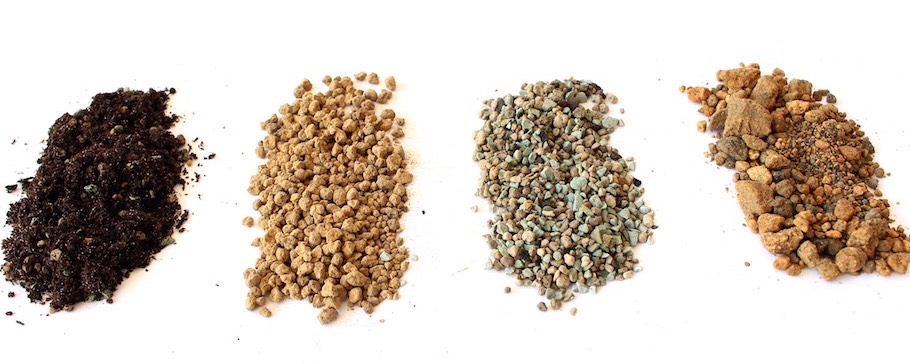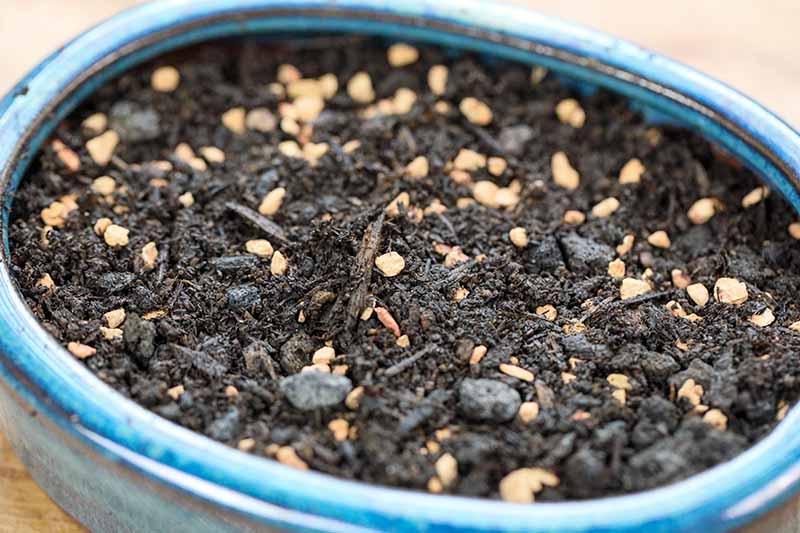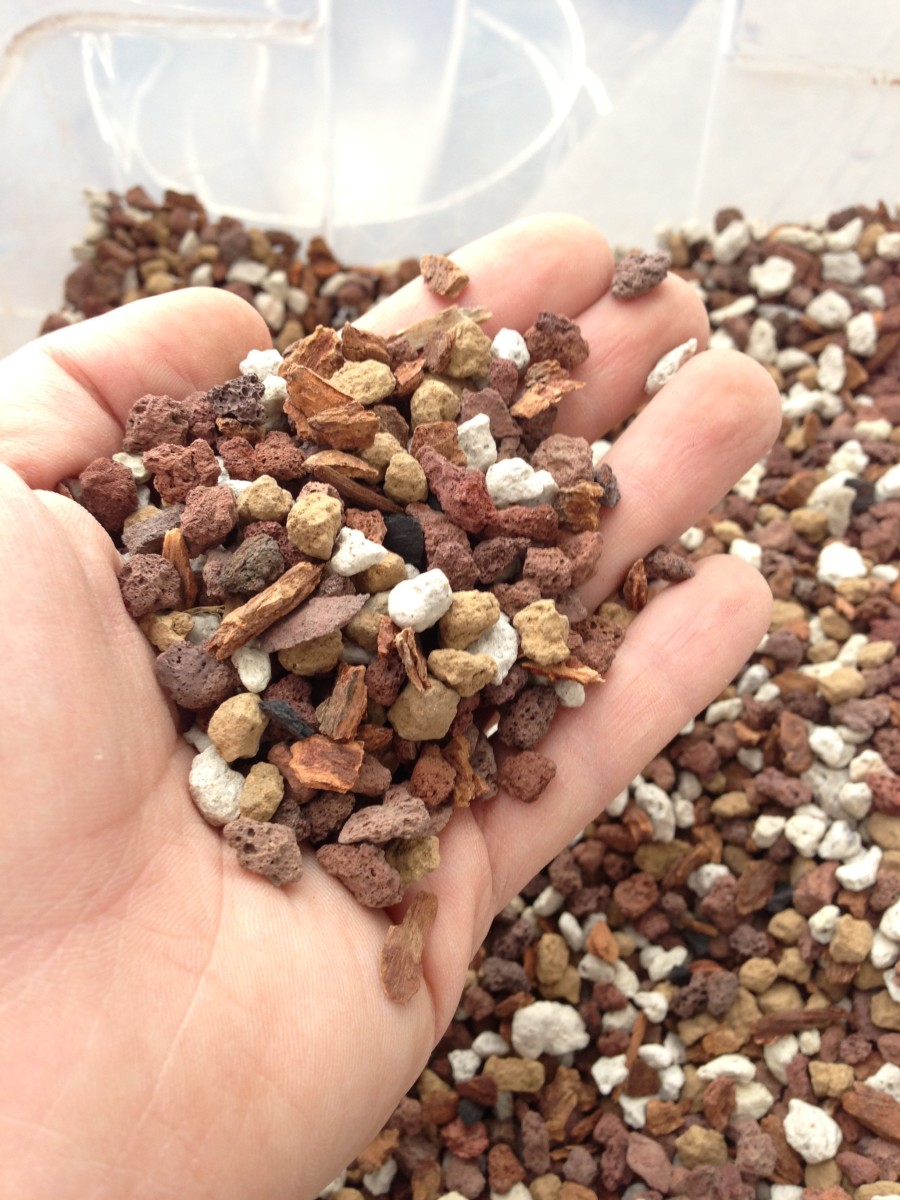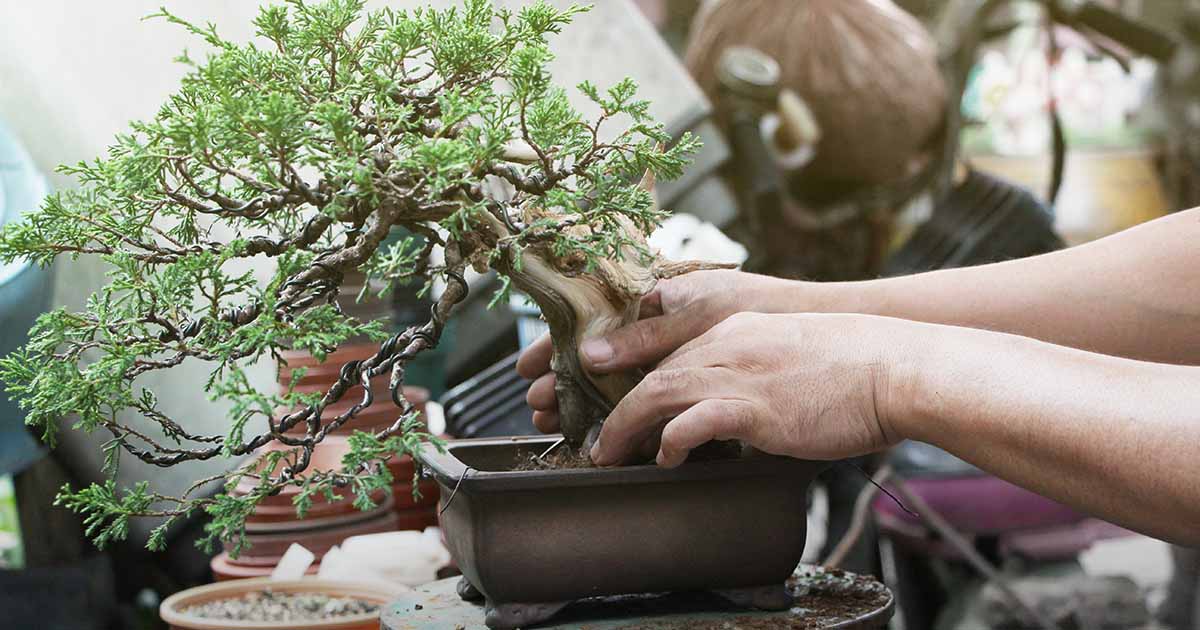In the following paragraphs, we are going to discover the different types of soil and substrates Employed in bonsai cultivation, like natural and organic and inorganic options.
We'll also discover recommended soil mixtures for various bonsai species, such as deciduous, coniferous, and indoor versions. From akadama and pumice to moss and river sand, we will dive into the fascinating world of bonsai soil and allow you to realize why It really is a very important Element of cultivating these exquisite trees.

Bonsai soil
What is bonsai soil?
Bonsai soil is a specialized type of soil that is specifically formulated for growing and maintaining bonsai trees. Unlike regular garden soil, bonsai soil is well-draining and provides the necessary nutrients and moisture balance for the tree's root system. The composition of bonsai soil is carefully designed to meet the unique needs of bonsai trees, ensuring their health and longevity.
The importance of bonsai soil
The choice of soil plays a crucial role in the success of your bonsai tree. The right soil provides optimal drainage, allowing excess water to flow freely and preventing root rot. It also promotes a healthy and well-developed root system, which is essential for the overall health and growth of the tree. Bonsai soil retains moisture while allowing air to reach the roots, striking the perfect balance for the tree's needs. Choosing the right bonsai soil is essential for maintaining a healthy and thriving bonsai tree.
Bonsai substrates
What are bonsai substrates?
Bonsai substrates refer to the different materials that can be used to create the ideal soil composition for bonsai trees. These substrates are carefully chosen to meet the specific needs of different species of bonsai trees and to ensure proper water drainage and nutrient availability.
Different types of bonsai substrates
There are various types of bonsai substrates available, each with its own unique characteristics and benefits. Some common bonsai substrates include:
- Organic materials: These include ingredients such as bark, peat moss, and coconut coir. Organic substrates help retain moisture and provide essential nutrients to the bonsai tree.
- Inorganic products: These involve components like pumice, lava rock, and akadama. Inorganic substrates present exceptional drainage, making sure that excessive drinking water doesn't accumulate around the roots on the bonsai tree.
- Soil amendments: These are generally substances which can be added into the soil combination to enhance its Attributes. Examples of soil amendments include things like perlite, vermiculite, and sand. They Enhance the soil's aeration, water-Keeping capacity, and nutrient availability.
By being familiar with the different types of bonsai substrates and their Houses, you'll be able to choose the most fitted one in your bonsai tree's desires.
Organic and natural or Inorganic Soils
Organic and natural soils for bonsai
Organic soils for bonsai are composed of pure elements which include bark, peat moss, coconut coir, and compost. These elements supply a rich supply of nutrients with the bonsai tree and boost healthier root advancement. Organic soils also have good water retention Attributes, guaranteeing the tree gets ample dampness concerning watering periods. On the other hand, it's important to notice that organic soils may perhaps break down over time and come to be compacted, bringing about very poor drainage and prospective root troubles.
Inorganic soils for bonsai
Inorganic soils for bonsai encompass supplies like pumice, lava rock, akadama, and soil amendments like perlite or vermiculite. These materials have outstanding drainage properties, blocking waterlogged soil and marketing aeration across the roots. Inorganic soils are desired by several bonsai fanatics because of their longevity and ability to offer a secure surroundings for your bonsai tree's root method. On the other hand, They might demand extra Repeated watering and additional fertilization, as they don't hold just as much dampness or nutrients as natural and organic soils.
Pluses and minuses of using natural and inorganic soils for bonsai
Picking involving organic and natural and inorganic soils to your bonsai tree relies on several aspects, including the specific species of tree, your weather, and personal Tastes. Listed here are the pluses and minuses of each and every:
Organic soils:
- Professionals: Deliver nutrients, good h2o retention, promote wholesome root growth.
- Downsides: Might stop working with time, probable for bad drainage Otherwise thoroughly preserved.
Inorganic soils:
- Professionals: Exceptional drainage, lengthy-Long lasting, secure surroundings for roots.
- Cons: A lot less h2o retention, may possibly involve more frequent watering and fertilization.
By thinking about the pluses and minuses of both of those organic and inorganic soils, you can make an educated selection determined by the specific requires of your bonsai tree.
Soil factors
Critical factors of bonsai soil
Bonsai soil is typically composed of 3 principal components: grit, natural and organic matter, and clay. These components operate jointly to generate The best soil framework for that bonsai tree's root process.
- Grit: Grit, for example sand or perlite, supplies drainage and aeration while in the soil. It can help reduce waterlogging and allows air to get to the roots.
- Organic make any difference: Organic issue, which include compost or bark, offers nutrients to your bonsai tree. It also helps keep humidity and Increase the soil's Over-all framework.
- Clay: Clay particles give some drinking water retention characteristics and assist bind the soil together. Even so, a lot of clay may result in poor drainage and compaction.
Position of every soil element
Every soil component performs a vital part in creating a well-well balanced and nutritious atmosphere with the bonsai tree's roots.
- Grit: Grit supplies the mandatory drainage and aeration from the soil. It stops the roots from sitting in stagnant h2o, cutting down the chance of root rot and selling All round root well being.
- Natural and organic subject: Organic and natural make a difference delivers necessary nutrients into the bonsai tree. It aids in moisture retention and contributes to the general construction from the soil.
- Clay: Clay particles support bind the soil jointly and supply some drinking water retention capability. Nonetheless, it's important to harmony the quantity of clay to stay away from troubles like inadequate drainage and compaction.
By understanding the roles of each soil component, you could develop a balanced bonsai soil mix that satisfies the precise wants of your tree.

Recommended Bonsai soil mixtures
Common bonsai soil mixtures
There are several common bonsai soil mixtures that have been proven effective for various types of bonsai trees. These mixtures typically consist of a combination of inorganic substrates, organic matter, and soil amendments.
Some of the commonly used bonsai soil mixtures include:
- Akadama, pumice, and lava rock: This mixture is popular among bonsai enthusiasts for its excellent drainage and water retention properties.
- Akadama, lava rock, and natural and organic make a difference: This mixture combines the benefits of inorganic substrates While using the nutrient-wealthy Homes of organic subject.
- Pumice, perlite, and bark: This mixture provides fantastic drainage and aeration whilst retaining some humidity and offering nutrients.
These are just a couple examples of bonsai soil mixtures, and The perfect mixture will count on the particular requires of your respective bonsai tree and also your local weather.
Aspects to consider when deciding on a bonsai soil mixture
When picking a bonsai soil combination, it's important to look at the subsequent things:
- Species of bonsai tree: Unique species have diverse moisture and nutrient demands. Investigate the specific wants of one's tree to choose a soil mixture that satisfies its demands.
- Local weather: The local climate you live in can have an impact on the humidity retention Qualities from the soil. Consider the common humidity and temperature close to you When selecting a soil mixture.
- Watering practices: Your personal watering behaviors and regime should align While using the soil combination you choose. Some mixtures require additional frequent watering, while others retain dampness for for a longer period periods.
- Funds: Some soil elements may be more expensive than Other folks. Take into consideration your price range when deciding upon a soil mixture.
By taking these things under consideration, you'll be able to pick a bonsai soil mixture that gives the very best rising problems for the tree.
Deciduous Bonsai soil
Finest soil composition for deciduous bonsai
Deciduous bonsai trees, like maple or birch, have particular soil demands to assist their growth and well being. The most effective soil composition for deciduous bonsai generally includes a mixture of natural and organic matter, inorganic substrates, and soil amendments.
A proposed soil composition for deciduous bonsai may well consist of:
- Akadama: Gives very good drinking water retention even though letting for drainage. Furthermore, it releases nutrients bit by bit after some time.
- Pumice: Encourages aeration and drainage during the soil, blocking waterlogging.
- Bark or peat moss: Provides natural and organic subject into the soil, supplying nutrients and humidity retention.
This soil composition ensures that the roots of deciduous bonsai trees acquire the proper balance of moisture, nutrients, and oxygen for optimum growth.

Coniferous and Pine soil
Ideal soil mixture for coniferous and pine bonsai
Coniferous and pine bonsai trees have specific soil requirements due to their water retention needs and preference for acidic soil. An ideal soil mixture for coniferous and pine bonsai should provide good drainage while retaining moisture and maintaining the desired pH level.
A recommended soil mixture for coniferous and pine bonsai may include:
- Akadama: Provides excellent water retention while allowing for sufficient drainage. It releases nutrients slowly over time.
- Pumice: Promotes aeration and drainage from the soil, blocking waterlogged roots.
- Peat moss: Provides natural and organic make any difference and acidity into the soil, developing an ideal pH degree for coniferous and pine trees.
This soil mixture ensures that the roots of coniferous and pine bonsai trees receive the appropriate equilibrium of dampness, nutrients, and acidity for their particular requirements.
Akadama
What's akadama?
Akadama is a sort of clay soil that is certainly widely Employed in bonsai cultivation. It really is recognized for its fantastic h2o retention Homes, which make certain a gentle supply of humidity to your bonsai tree's roots. Akadama is likewise prized for its capacity to release nutrients slowly as time passes, delivering a regular source of nourishment for the tree.
Great things about employing akadama in bonsai soil
Making use of akadama in bonsai soil provides several Gains:
- Drinking water retention: Akadama has Extraordinary water retention Houses, letting it to hold moisture devoid of getting to be waterlogged. This ensures that the bonsai tree's roots receive a regular offer of drinking water, advertising balanced expansion.
- Nutrient release: Akadama slowly releases nutrients in the soil after some time, delivering a constant source of nourishment with the bonsai tree. This lessens the need for Regular fertilization and can help manage a well balanced nutrient profile.
- Aeration: In spite of its h2o retention capabilities, akadama also provides enough aeration for the bonsai tree's roots. It lets air to get to the root program, preventing problems which include root rot due to deficiency of oxygen.
By incorporating akadama in to the bonsai soil, you may develop an optimum expanding setting for your personal tree, making sure its overall health and vitality.

Lava rock
How lava rock benefits bonsai soil
Lava rock is a popular component in bonsai soil mixtures due to its excellent drainage and aeration properties. It is typically used in conjunction with other substrates to create the ideal soil composition for bonsai trees.
The benefits of lava rock in bonsai soil include:
- Drainage: Lava rock provides excellent drainage, preventing waterlogging and ensuring that excess water flows freely through the soil. This helps prevent root rot and provides a healthy environment for the roots to thrive.
- Aeration: The porous nature of lava rock enables air to circulate in the soil, providing oxygen on the bonsai tree's root system. Suitable aeration is very important for healthful root development and Over-all tree expansion.
- Longevity: Lava rock is a sturdy material that does not stop working easily. This makes sure that the soil composition continues to be steady with time, reducing the need for Repeated soil replacements.
Lava rock is out there in numerous measurements and designs, allowing for for personalization according to the precise desires of one's bonsai tree and soil requirements.
Differing kinds of lava rock
There are different types of lava rock that can be Employed in bonsai soil mixtures, which include:
- Black lava rock: Black lava rock is a typically used material in bonsai soil mixtures. It offers fantastic drainage Homes and adds an aesthetic ingredient to the general presentation on the bonsai tree.
- Crimson lava rock: Purple lava rock is another well-liked alternative in bonsai soil mixtures. It provides very similar drainage and aeration benefits as black lava rock but has a definite reddish color that adds visual desire into the container.
Both equally black and crimson lava rocks are widely readily available and can be effortlessly included into your bonsai soil combination.
Potting
Necessary tips for profitable bonsai potting
Potting is usually a critical procedure in bonsai cultivation, since it instantly impacts the health and improvement of your tree's roots. Here are a few vital tricks for thriving bonsai potting:
- Pick the appropriate pot dimension: Decide on a bonsai pot that enables for root expansion whilst still giving a comfortable healthy. Steer clear of pots that happen to be much too large, as they can cause excessive soil moisture and bad root growth.
- Use bonsai wire: Protected the tree in the pot applying bonsai wire to make certain stability. This stops the tree from shifting or becoming uprooted in the course of watering or strong winds.
- Trim and unfold the roots: In advance of potting the bonsai tree, diligently trim and spread out the roots. This encourages outward progress and helps prevent root tangling or root-sure difficulties.
- Add mesh screens: Position mesh screens about the drainage holes at the bottom of the pot to stop soil erosion and make sure good drainage.
- Use contemporary bonsai soil: When potting, often use refreshing bonsai soil to supply the required nutrients and exceptional rising disorders for the roots.
By subsequent these necessary guidelines, you can be certain a successful potting approach and advertise the general well being and growth of your bonsai tree.
The function of bonsai pots in soil moisture Handle
Bonsai pots Engage in a crucial purpose in soil humidity Command, specifically impacting the health and fitness and growth check here of your tree. Bonsai pots are usually shallow and have drainage holes, allowing excess h2o to escape and preventing the soil from starting to be waterlogged.
The design of bonsai pots promotes evaporation and air circulation, which helps regulate soil humidity amounts. The shallow depth and extensive opening of your pot expose a lot more floor space of your soil on the air, aiding in moisture evaporation. This helps prevent the roots from sitting in excessively damp soil, lessening the potential risk of root rot and also other water-similar problems.
Furthermore, the drainage holes in bonsai pots allow any excess drinking water to flee, avoiding waterlogged soil and advertising aeration within check here the roots. Right aeration is important for the well being and improvement of the foundation method, ensuring the bonsai tree gets the mandatory oxygen for progress.
By using bonsai pots created for effective dampness control, it is possible to produce a favorable ecosystem in your bonsai tree's roots and encourage its All round health and fitness and vitality.
In conclusion, picking out the suitable bonsai soil is vital for that achievement and wellness of the bonsai tree. Comprehending the different sorts of bonsai substrates, the role of natural and inorganic soils, The real key elements of bonsai soil, and the varied suggested soil mixtures will assist you to present the optimum increasing circumstances for your bonsai tree. Whether there is a deciduous or coniferous bonsai, incorporating products like akadama and lava rock can boost the soil's drainage and nutrient availability. Furthermore, taking note of potting methods and employing bonsai pots created for moisture Command will even further assist the thriving expansion of the bonsai tree. With appropriate comprehension and implementation of bonsai soil tactics, you'll be able to benefit from the natural beauty and artistry of bonsai cultivation For some time to return.
